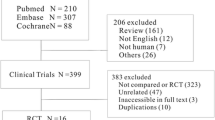Abstract
Background
Among numerous cosmetic procedures for face rejuvenation performed all over the world, botulinum toxin type A (BoNT-A) for wrinkles is one of the most widely practiced procedures. However, for severe frowns, the application of botulinum toxin is often insufficient. In this study, the effects of hyaluronic acid filler combination therapy and the BoNT-A alone were evaluated.
Methods
Forty subjects with 2 or higher points (moderate to severe) of a facial wrinkle scale (FWS) when frowning in the glabellar area were assigned to 2 group: Botulinum toxin type A monotherapy group and a combination regimen of the toxin and hyaluronic acid filler group. Subjects visited outpatient department every 4 weeks until 28 weeks after the injection, and the assessment of the efficacy using FWS, subject satisfaction at both resting and maximum frowning and safety analysis were performed.
Results
Subjects of both group was administered 18U of BoNT-A and the subjects of the combination group received additional 0.45mL of hyaluronic acid filler regimen. Both at rest and maximum frown, the combination group scored lower FWS than the toxin and showed significance in the week-20 and week-28. And at final visit, subject satisfaction score of the combination was higher than that of toxin group.
Conclusion
For patients with moderate to severe glabellar frown, the combined administration of BoNT-A and hyaluronic acid filler could be a considerable treatment for improving wrinkles.
Level of Evidence III
This journal requires that authors assign a level of evidence to each article. For a full description of these Evidence-Based Medicine ratings, please refer to the Table of Contents or the online Instructions to Authors www.springer.com/00266.








Similar content being viewed by others
References
Kiersten RC, Jean C (2006) Combination therapy with BOTOXTM and fillers: the new rejuvenation paradigm. Dermatol Ther 19(3):177–188
Samy AE, Serag MZ (2013) Combination of botulinum toxin type a and hyaluronica acid filler for treatment of moderate to severe glabellar rhytides: results of 1 year follow up. Life Sci J 10(4):1835–1840
Nigam PK, Nigam A (2010) Botulinum toxin. Indian J Dermatol 55(1):8–14
Chen WYJ, Abatangelo G (2002) Functions of hyaluronan in wound repair. Hyaluronan 2:147–156
Alexander H, Ronny P (2020) Hyaluronic acid applications in ophthalmology, rheumatology, and dermatology. Carbohyd Res 489:107950
Germain H, Jean-Yves R, Francois R, Xavier R, Anton G, Veronique R et al (2019) Safety of intra-articular hyaluronic acid injections in osteoarthritis: outcomes of a systematic review and meta-analysis. Drugs Aging 36(1):101–127
Bacos JT, Dayan SH (2019) Superficial dermal fillers with hyaluronic acid. Facial Plast Surg 35(03):219–223
Cong LY, Choi YJ, Hu KS, Tansatit T, Kim HJ (2019) Three-dimensional topography of the emerging point of the ophthalmic artery. Plast Reconstruct Surg 149(1):32e–38e
Lee W, Oh W, Ko HS, Lee SY, Kim KW, Yang EJ (2019) Effectiveness of retrobulbar hyaluronidase injection in an iatrogenic blindness rabbit model using hyaluronic acid filler injection. Plast Reconstruct Surg 144(1):137–143
Meghan D, Rebecca T, Diana B, Anne MM, Bailey T, Mauricio S, Fabiane MB, Trevor J, Dennis PW, Emily P, Michael N, Murad A (2013) Treatment of forehead/glabellar rhytide complex with combination botulinum toxin a and hyaluronic acid versus botulinum toxin a injection alone: a split-face, rater-blinded, randomized control trial. J Cosmet Dermatol 12(4):261–266
Flynn TC (2011) Botulinum toxin: examining duration of effect in facial aesthetic applications. Am J Clin Dermatol 11(3):183–199
Paul SY, Nicholas JL (2004) Botulinum toxin types A and B: comparison of efficacy, duration, and dose-ranging studies for the treatment of facial rhytides and hyperhidrosis. Clin Dermatol 22(1):34–39
Gary B (2007) Botulinum toxin, immunologic considerations with long-term repeated use, with emphasis on cosmetic applications. Fac Plast Surg Clin N Am 15:11–16
Jill AF, Paul LP, Liana HP, Allan EW, Julian DP (2005) Modifying brow position with botulinum toxin. Int Ophthalmol Clin 45(3):123–131
Funding
This work was supported by the Soonchunhyang University Research Fund.
Author information
Authors and Affiliations
Corresponding author
Ethics declarations
Conflict of interest
The authors declare that they have no conflict of interest to disclose.
Human and animal research
All procedures performed in studies involving human participants were in accordance with the ethical standards of the institutional research board (IRB) and with the 1964 Helsinki declaration and its later amendments or comparable ethical standards.
Informed consent
All participants in this study had written well-informed consent.
Additional information
Publisher's Note
Springer Nature remains neutral with regard to jurisdictional claims in published maps and institutional affiliations.
Rights and permissions
About this article
Cite this article
Kim, J.H., Park, E.S., Nam, S.M. et al. Comparison of Effectiveness and Safety of a Botulinum Toxin Monotherapy and a Combination Therapy with Hyaluronic Acid Filler for Improving Glabellar Frown. Aesth Plast Surg 46, 1872–1880 (2022). https://doi.org/10.1007/s00266-022-02895-7
Received:
Accepted:
Published:
Issue Date:
DOI: https://doi.org/10.1007/s00266-022-02895-7




